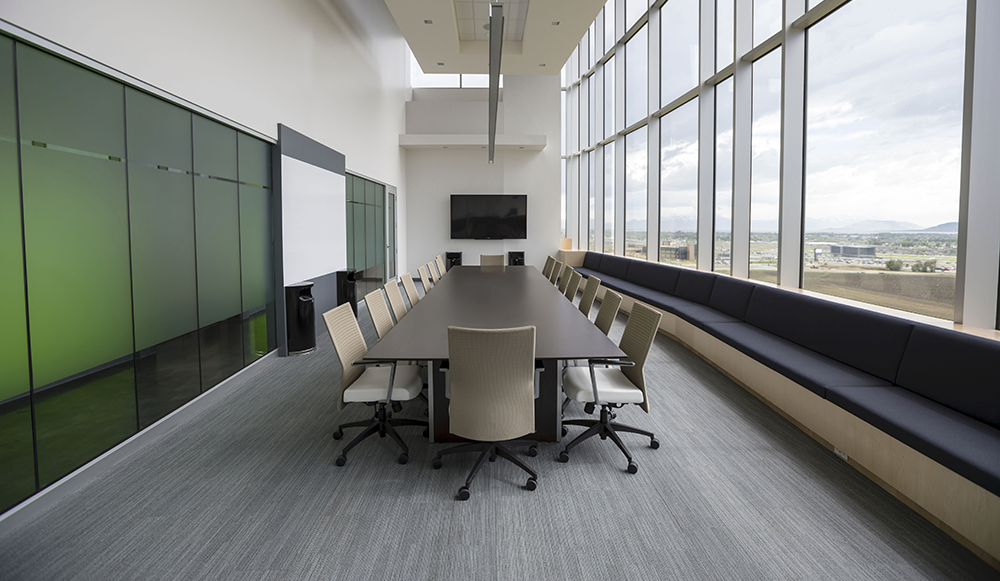Attract Top Talent With These 5 Essential Modern Office Features

Offices are changing. Gone are the days of cubicles and water cooler networking. Corner offices are passé, and old coffee makers just don’t cut it anymore.
The evolution of the office is about more than just design trends. Our office environments affect our health, well-being, and productivity. They change the way we work.
As recruitment and retention grow more competitive, job seekers are looking beyond standard salaries and basic benefits when evaluating job opportunities. The office environment you provide can be a massive differentiator with today’s top talent.
But it takes more than an open floor plan and cold brew on tap to keep employees satisfied. Here are five key office design features that will make your workplace stand out :
1. Parent’s Rooms
A parent’s room can take many forms, because it serves a number of incredibly important purposes.
As one example, more than 80 percent of mothers nurse their newborns and continue to do so for months after birth. At the same time, one in four mothers are right back to work just 10 days after giving birth (a parental leave issue in and of itself that merits its own article). You shouldn’t expect your best employees to hide in closets or bathrooms to breastfeed and pump; a parent’s room can be the perfect solution.
Additionally, new moms often face pregnancy discrimination and have to push for the most basic parental benefits. By offering a parent’s room, your company designates itself as one that will actually be there for its employees.
2. Gender-Neutral, Accessible Bathrooms
Inclusion and diversity aren’t just buzzwords. If companies want to walk the walk, they need to build offices that support the varied needs of all their employees. Restroom access is a necessity for each and every employee, and a lack of accessible facilities is a blatant disadvantage for your company in the talent market.
If office cubicles are obsolete, so are standard bathroom setups that only cater to the gender binary. Companies must offer bathrooms for people of every gender identity and all forms of ability. Such spaces don’t necessarily have to be the only bathrooms available in the office, but they do need to exist in some form.
For more expert HR insights, check out the latest issue of Recruiter.com Magazine:
3. An Area for Children
Beer on tap and after-hour movie nights are great perks for entry-level workers, but as millennials — the largest generation in the workforce — age into parenthood, they’re looking for more perks that help them strike a satisfying work/life balance.
A child-friendly workspace is a dream come true for most parents, but it’s mostly that: a dream. As more and more coworking spaces start offering designated play areas, traditional offices will have to keep up. Setting aside in-house space for children will alleviate the stress your parent employees feel when there’s a last-minute snow day, for example, and it makes it easier for them to pop over to the pediatrician’s office for a child’s checkup during the workday.
4. Varied Workspaces for a Varied Workforce
Desks have been an office staple throughout the years, but they don’t necessarily meet the needs of today’s workers. The modern workforce is mobile. Rather than being tied to one spot, your employees want to be able to work on the go, wherever they go, in whatever environments are most conducive to the task at hand.
An adaptable workspace is one that allows employees to reconfigure their physical spaces to meet their changing needs, rather than forcing them to stay in one area. But what does this actually look like?
Offices should have a variety of closed conference rooms and open work areas, spaces designated for rest and relaxation, and well-lit areas meant for getting things done on your own or with your team. Remote logins, video conferencing tech, and robust network capabilities also give employees the freedom to work from anywhere within these versatile spaces. Increased mobility and an assortment of area types allow workers to find the best spots based on their preferences for collaborative meetings, quick calls, or heads-down projects.
5. Quiet Rooms
More than half of Americans report being stressed daily, and 83 percent of US employees report being stressed on the job. Providing employees with space to meditate, pray, and recharge can help reduce stress and sickness in your office while increasing employee productivity.
When designing a quiet room for your office, be sure to get input from employees of multiple faiths to ensure the room is respectful of all religions. It’s also critical to establish clear expectations for use of the quiet room to ensure employees are utilizing the space appropriately.
—
These are just some of the ways you can update your office with employee needs in mind. Creating a more modern workspace doesn’t necessarily mean pulling up all the carpets and getting rid of every feature across your floor, but reconfiguring your space for a rapidly changing workforce will undoubtedly put your company ahead of the pack when it comes to appealing to the talent of today — and tomorrow.
Ryan Lathrum is director of community and inclusion at BounceX.

